Radiolarian
Saturday, 22 August 2009
In his column in the VPRO guide Wim Noordhoek recently wrote about ”radiolarian”. I cannot remember that I have ever heard of these organisms before, but there was a little photo of some of these creatures with the column that intrigued me very much. So tonight I did a Google search and found out that the whole world has been studying radiolarian without telling me.
The best information so far I found on the site Science Corner. They say:
”Radiolarian are single-celled, oceanic organisms. Their cell is separated by a tiny central capsule into endo- and ectoplasm and it is on this endoplasmic exterior that amazingly intricate mineral skeletons are composed. Their remains comprise the majority of the ocean’s worldwide fossil record, especially in shallow coastal waters.”
”The perpetually symmetrically patterned perforations form gradually as the organism feeds and the leftover skeleton is extracted from a build up of minerals and silica.”
And here are some images form the same site:
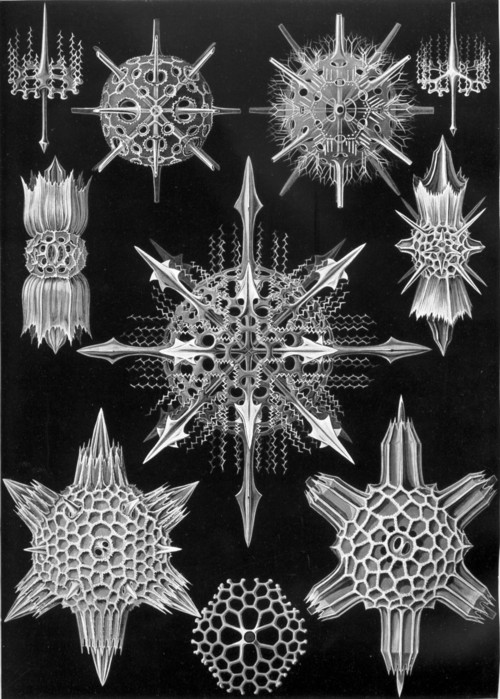
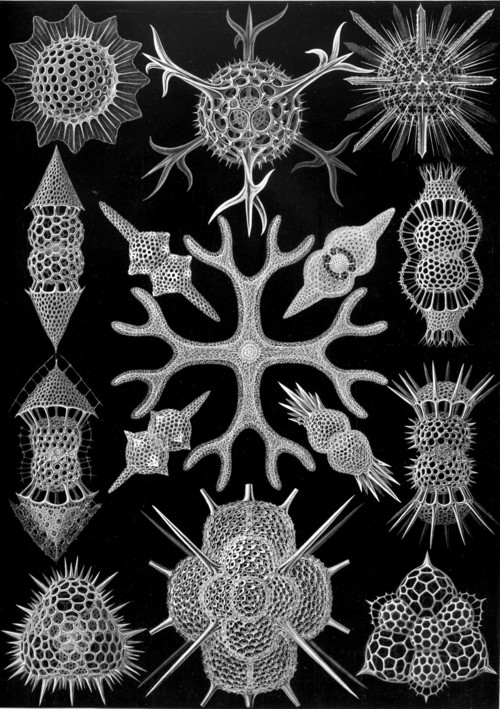
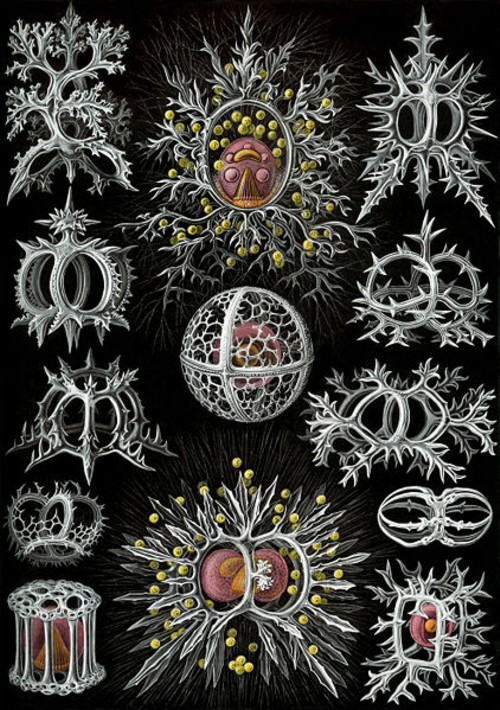
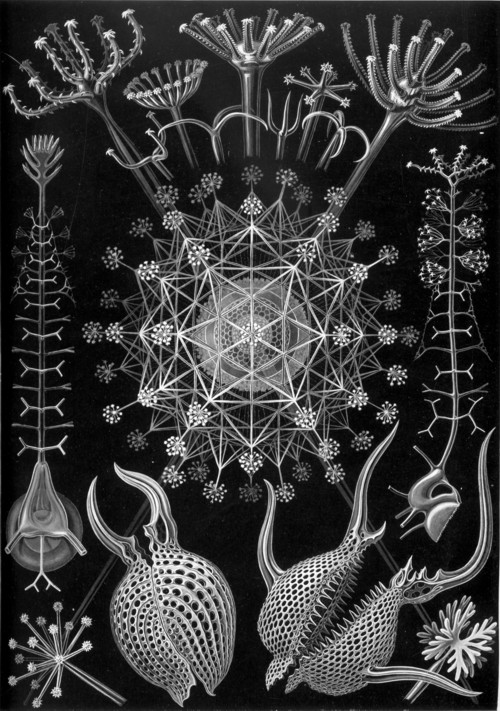
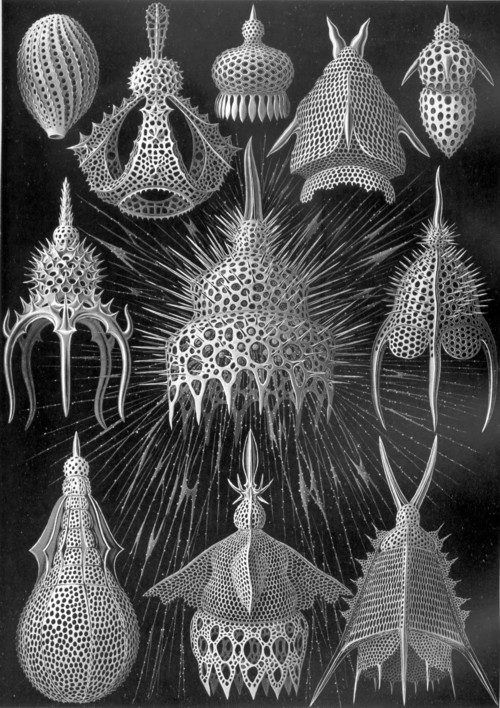
The scientist Ernst Heackel is responsible for these beautiful studies:
”Haeckel’s focus for many years was an intricate, single-celled organism known as a Radiolarian. In his initial work with them, he found, named and depicted over 150 diverse species. He would go on to document thousands more.”
”While Ernst Haeckel was not the first or last scientist to work with radiolarian, his art and his work remain today as a testament to the marriage that can exist between the two. Haeckel believed that all shapes found in nature exist in radiolaria and wondered if God did not use these tiny creatures as a drawing board for further design.”
No need to say that these radiolarians remind me of the shapes seen in Cymatic experiments. In fact, some images seem almost identical. Again, I feel a big idea lurking in the back of my mind, in which all this stuff is shown to be connected: sound, organic life forms, DNA, language… But unfortunately it is beyond the reach of my thinking apparatus at this moment.
Comments:
frits
2009-08-22 12:35:38
Wat een mooie fotoos! Ik ben helemaal weg van de radiolaria. Ik moet ze eerder ergens hebben gezien, maar kan me er niets van herinneren. Vooral de overeenkomsten met de Cymatica patronen fascineert me. Als je nog meer sites vindt…
Emil Roduner
2014-03-10 06:58:38
I am currently writing an advanced textbook “Nanomaterials – Size-Dependent Phenomena and Growth Phenomena”. In this book I would like to use the last of the above radiolaria figures on this homepage, and I would like to ask you for your kind permission to use it.
With kind regards
Emil roudner
University of Stuttgart
waa
2009-08-22 10:32:01
Take a look at Wim van Egmond’s photographs of radiolaria. He’s a big Haeckel fan, of course:
http://www.microscopy-uk.org.uk/micropolitan/marine/radiolaria/index.html